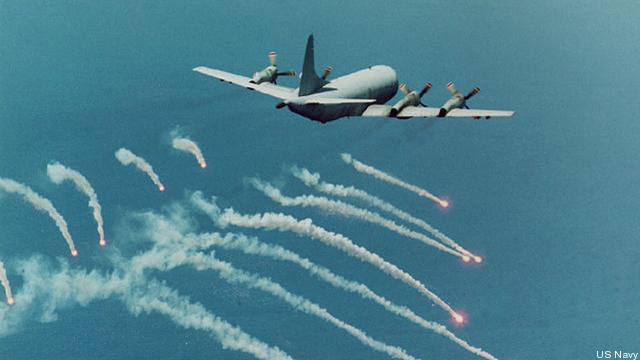Navy’s Sub-Hunting Skills Declined While China, Iran Built More Submarines
Posted on

VIRGINIA BEACH, VA: During a decade of relentless focus on counterinsurgency, the military has let other skills erode, skills it will have to struggle to get back even as budgets tighten. In particular, the capacity of the US and allied navies to hunt enemy submarines has suffered even as potential adversaries like China and Iran have built up their sub fleets.
That’s not to say it wasn’t necessary to put Afghanistan and Iraq first — just that we’ve paid a price. “They were good choices,” said Rear Adm. Phil Davidson of the Navy’s Fleet Forces Command, speaking at the annual Joint Warfighting Conference hosted by the US Naval Institute and the electronics industry group AFCEA. “They were needed for the current fight,” Davidson went on, “but these choices were not without cost.”
Nor is the problem unique to the US. Across Europe, “our specialist skills have begun to perish,” agreed Royal Navy Admiral Tony Johnstone-Burt, the chief of staff for NATO’s “Allied Command Transformation.” Like Davidson, the British admiral particularly noted gaps in anti-submarine warfare.
Historically, the US and Royal Navy have both made sub-hunting a top priority ever since World War I and II, when German U-boats twice came close to cutting the supply lines across the Atlantic — a feat many NATO commanders feared the Soviet submarine fleet would try to replicate in the event of World War III. Today there are new naval threats from China and Iran, which operate in entirely different waters from the traditional trans-Atlantic threat and, in the Iranian case, in the narrows and shallows of the Persian Gulf, where it’s far easier for submarines (and mines) to hide than in the open ocean.
The Navy’s long-term solution for this shallow-water sub hunt is the Littoral Combat Ship, a small, high-speed vessel built to take different “mission modules” so the same vessel can switch from hunting subs to fighting small attack boats to clearing mines. For now, however, the LCS sub-hunting module is still in development, with entry in service in fact delayed until 2016.
Meanwhile the fleet that actually exists has lost its traditional focus on fighting submarines. For example, said Davidson, the Navy’s P-3 Orion reconnaissance planes used to spend twice as much time training for anti-submarine warfare (ASW) as they did other “intelligence, surveillance, and reconnaissance” (ISR) missions. Since 2001, however, the P-3s have increasingly been pressed into service over Afghanistan and Iraq, Davidson said, to the point that “we have a force with three to four times the experience flying ISR overland as doing ASW.”
While the Army and Marines look forward to a lower pace of operations that will allow them to rethink their missions for the post-Afghanistan world, the Navy cannot. “Demand is up,” not down, said Davidson. “The deployment strain right now for the Navy is as great or greater as it’s been any time in the past ten years.” The recent deployment of the USS Bataan and its battle group for ten and a half months may have been extreme, but the old expectation of six to seven months at sea is gone, he said, with carrier strike groups typically deploying for nine months at a stretch. That means more wear and tear on the fleet, less time and money to train.
Subscribe to our newsletter
Promotions, new products and sales. Directly to your inbox.
